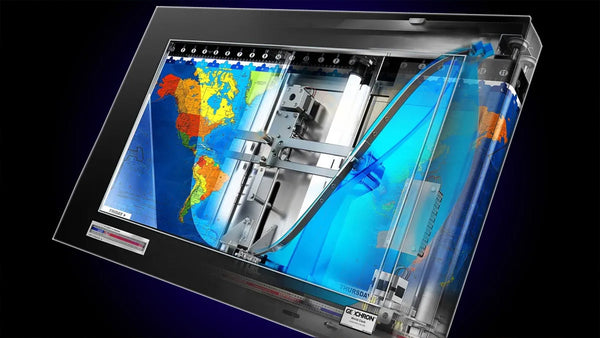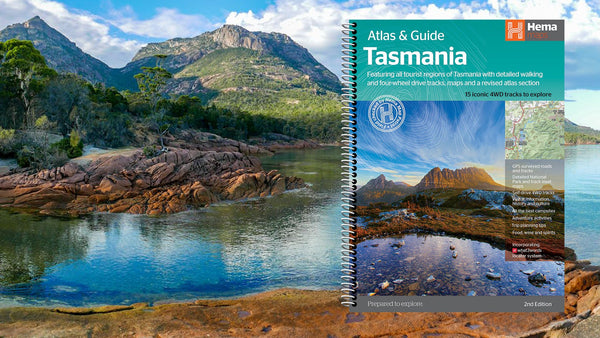- Australia ▾
- Topographic
▾
- Australia AUSTopo 250k (2024)
- Australia 50k Geoscience maps
- Australia 100k Geoscience maps
- Australia 250k Geoscience maps
- Australia 1.1m Geoscience maps
- New Zealand 50k maps
- New Zealand 250k maps
- New South Wales 25k maps
- New South Wales 50k maps
- New South Wales 100k maps
- Queensland 10k maps
- Queensland 25k maps
- Queensland 50k maps
- Queensland 100k maps
- Compasses
- Software
- GPS Systems
- Orienteering
- International ▾
- Wall Maps
▾
- World
- Australia & New Zealand
- Countries, Continents & Regions
- Historical
- Vintage National Geographic
- Australian Capital Territory
- New South Wales
- Northern Territory
- Queensland
- South Australia
- Tasmania
- Victoria
- Western Australia
- Celestial
- Children's
- Mining & Resources
- Wine Maps
- Healthcare
- Postcode Maps
- Electoral Maps
- Nautical ▾
- Flags
▾
- Australian Flag Sets & Banners
- Flag Bunting
- Handwavers
- Australian National Flags
- Aboriginal Flags
- Torres Strait Islander Flags
- International Flags
- Flagpoles & Accessories
- Australian Capital Territory Flags
- New South Wales Flags
- Northern Territory Flags
- Queensland Flags
- South Australia Flags
- Tasmania Flags
- Victoria Flags
- Western Australia Flags
- Gifts ▾
- Globes ▾
Dear valued customer. Please note that our checkout is not supported by old browsers. Please use a recent browser to access all checkout capabilities
Redrawing the World: The Art of Tracey Polglaze

You think you know what a map is.
Lines, borders, roads and routes. Contour lines marching dutifully across the page like the ghostly memory of mountain ranges. Symbols for airports, stars for capital cities, compass roses spinning on the edge like polite afterthoughts. A map is something we’ve learned to read before we’ve learned to understand it. Functional. Familiar. Slightly faded from being folded too many times.
And then you discover Tracey Polglaze, and everything you thought you knew about maps unravels like a coastline redrawn in the sand.
Where the Land Meets the Imagination
Tracey lives and works in the Northern Territory, that vast, sun-washed expanse of ochre and light where the ordinary rules of space and time tend to bend. Originally from New Zealand, she brings with her not just a different latitude but a whole new lens—one that peers into maps not for the coordinates they give, but for the worlds they suggest.
Her medium? Vintage maps and nautical charts. Her tools? A painter’s instinct, an explorer’s curiosity, and an environmentalist’s reverence. The result? Artwork that feels both immediate and ancient. Ephemeral, yet deeply rooted.
When we first came across Tracey, it was as a supplier. She needed vintage-style maps and charts—paper with a past, if you will—onto which she could breathe new life. At the time, we knew nothing of what she intended to do with them. We assumed perhaps framing, or maybe collage.
What we received back was astonishing.
Not Just Art. A Reimagining.
Tracey doesn’t decorate maps. She doesn’t embellish them. She inhabits them. Her paintings feel as though they belong to the maps themselves—as if the land or sea has finally found a way to illustrate its own emotions.
In one work, the curve of a bay becomes the sweep of a whale’s fin. In another, the blue soundings of a nautical chart give rise to a jellyfish, its tentacles drifting over measured depths as if they too were part of the tide. A weathered maritime map of the Timor Sea suddenly reveals, with the flick of her brush, a turtle gliding through eddies of handwritten cartographic script.
These are not additions. They are revelations.
She doesn’t force nature onto the map; she draws it out of it, as if the oceans and ridgelines were merely waiting for someone with the right eye—and heart—to unearth them.

An Artist with Compass and Conscience
Tracey’s art carries within it a quiet ecological urgency. There’s a reverence for country, for habitat, for ecosystems on the brink. Her subjects—dolphins, mangroves, crustaceans, coral reefs—aren’t chosen at random. They are reminders. Signals. Witnesses.
There’s something subversive, in the most elegant way, about placing these creatures into charts originally drawn for extraction, conquest, or control. Nautical maps, after all, were designed to navigate and name, to define and divide. Tracey reclaims them. She overlays their geometry with the organic, reminding us that nature is not to be charted—it is to be honoured.
Her works are gentle, but not passive. They whisper of interconnectedness. They ask questions. What is our relationship to place? What stories do maps erase? What happens when the sea levels rise and the charted becomes the drowned?
They are, in the truest sense, eco-poetry.
Studio North: Life in the Top End
A visit to Tracey’s studio is a study in contrasts.
Outside: cicadas buzz like powerlines, tropical storms gather theatrically over the Arafura Sea, and the red dust clings to your shoes like a souvenir.
Inside: calm. Light. Silence. And maps.
They are everywhere. Folded, rolled, stacked in gentle disorder. Nautical charts from the Royal Australian Navy. Tourist maps from the 1970s. Old surveyor’s documents from the Department of Lands. Some are yellowed with time. Others are crisp with history. All are waiting.
And then there’s the art itself. Dozens of works in progress, layered with brushwork so delicate you’d swear it was inked by tide and wind rather than human hand. Her palette tends toward the natural: earth tones, seafoam, burnt orange, reef blue. And yet, within these colours is an emotional resonance that transcends pigment. These are not hues chosen for aesthetic. They are truths.
Each painting is not just a work—it’s a conversation. Between artist and land. Between sea and self.
The Pull of the Map
There’s something undeniably romantic about maps. Even before Tracey touches them, they hum with the possibility of journey. We trace our fingers over them and imagine routes, expeditions, encounters. They are, in their own way, the original works of fiction—where every contour line is a plot, and every coordinate a character.
What Tracey has done is to lift that latent narrative and give it voice. Her paintings are not static—they move. They shimmer. They breathe.
In one of her most striking pieces, a pod of whales swims across the contours of the Bathurst Island coastline. Their bodies curve with the island’s topography. Their tails flick into the legend box, as if refusing to be contained.
Elsewhere, a reefscape emerges from the flat blues of a hydrographic chart. Fish swim between latitude lines. Corals bloom like thoughts across the meridian.
There is no hierarchy here. No distinction between science and soul. Everything is connected. Everything belongs.
From Collector’s Curio to Cultural Icon
Tracey’s work has moved from the quiet corners of collectors’ homes into more public—and prominent—spaces. Her paintings have appeared in galleries, environmental exhibitions, design showcases, and private commissions.
And yet, there is nothing mass-produced about what she does. Each work is unique, not just because each map is different, but because each painting is site-specific in spirit.
A painting on a chart of Darwin Harbour will carry a different energy from one on a map of the Whitsundays. A Norfolk nautical chart speaks in cooler tones than one from the Top End. The map provides not just the background—but the place. And from that place, the subject emerges.
What she’s created, intentionally or not, is a new kind of cartography: an emotional geography, where feeling and environment are inseparable.

Why It Matters
In an age where satellite imagery can render maps in hyper-accurate digital glory, where Google Earth can zoom us in on the roof of our own houses, one might wonder: why do Tracey’s works resonate?
The answer, I think, is that we’ve never stopped yearning for connection. For grounding. For ways to make sense of place that don’t involve data or downloads.
A map tells us where we are.
Tracey’s art tells us why it matters.
She reminds us that every bay has a personality. That every estuary is a mood. That every reef is a world.
In times of environmental uncertainty and cultural forgetting, her work offers something rare: a return. Not just to country, but to awareness.
The View from Here
I will never look at a map the same way again.
Thanks to Tracey, I now wonder: what swims beneath this contour? What spirit lives between these co-ordinates? What stories are hidden in the faded names of bays and shoals?
There’s an image that stays with me—a painting she did on a tattered old chart from the Coral Sea. The paper is sun-bleached, its edges soft from age. But in the centre, painted with impossibly fine strokes, a sea turtle glides between depth soundings. Its shell echoes the compass rose. Its flippers stretch toward islands the colour of bone. There is nothing else. And there is everything.
It’s not a map anymore. It’s not even just art.
It’s a way of seeing.
Where to Find Her Work
For those who wish to explore Tracey’s world further—and I cannot recommend it enough—you can visit her website:
👉 www.traceypolglaze.com
There you’ll find not just finished works, but insights into her process, her materials, and her vision. From small original works to large-scale commissions, the diversity is as wide as the maps she reimagines.
Each piece is a one-of-a-kind window into nature, memory, and the spirit of place.
In Closing: A New Mapmaker Emerges
Some artists paint what they see. Others paint what they feel. Tracey Polglaze paints what the land and sea remember.
She is, in every sense, a mapmaker. Not in the traditional sense of plotting routes and distances—but in charting new emotional terrain. In placing us, gently but unforgettably, back into the landscape we too often forget we belong to.
Her art doesn’t just hang on walls. It opens doors.
And once you step through, you’ll never look at a map—or the world around you—the same way again.
1 Response
Anne Sharp
LOVE your work Tracey 💕
Leave a comment
Comments will be approved before showing up.
Also in Travel Writings / Product Reviews

Club Med Phuket: Our Full Week in Review
Whether you’re a family chasing a balance between togetherness and independence, a couple craving peace and cocktails, or simply someone ready to trade routine for ritual—this is your place.

Where the Sun Never Sets: A Glorious History of Geochron World Clocks
The Geochron, whether mechanical or digital, offers more than information. It offers perspective. It reasserts the idea that we are part of a rotating story—lit by the sun, divided by clocks, and unified by the gentle ticking of planetary rhythm.

Tracks, Trails & Tassie Tales: A Rambler’s and Rover’s Guide to Tasmania
Tasmania doesn’t just offer adventure. It insists on it. It pulls you into its wilderness, tests your knees and diff locks, and then offers you a view that resets your understanding of beauty.
Patrick O'Keeffe
Author